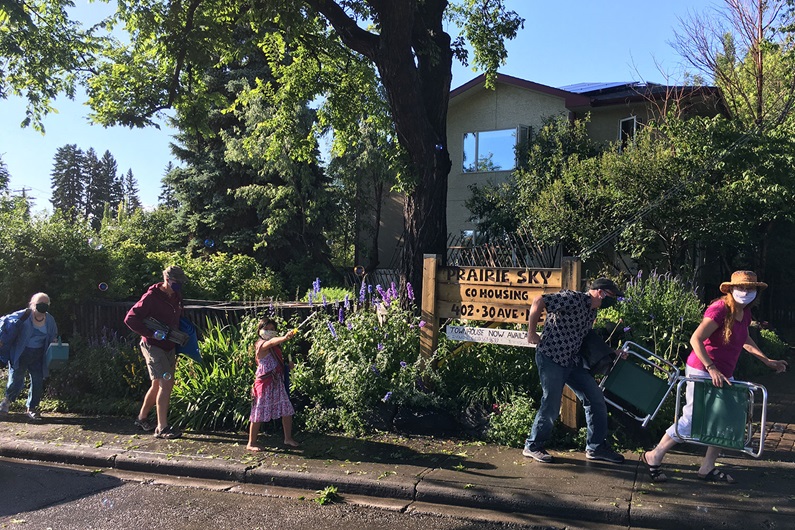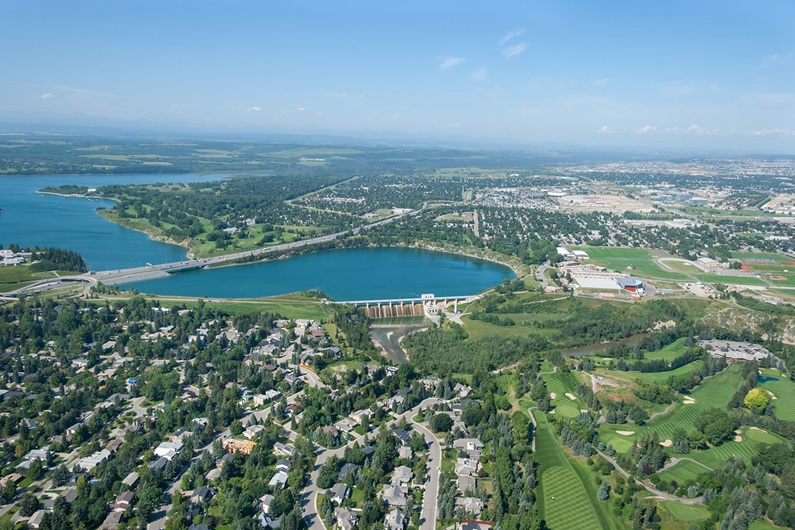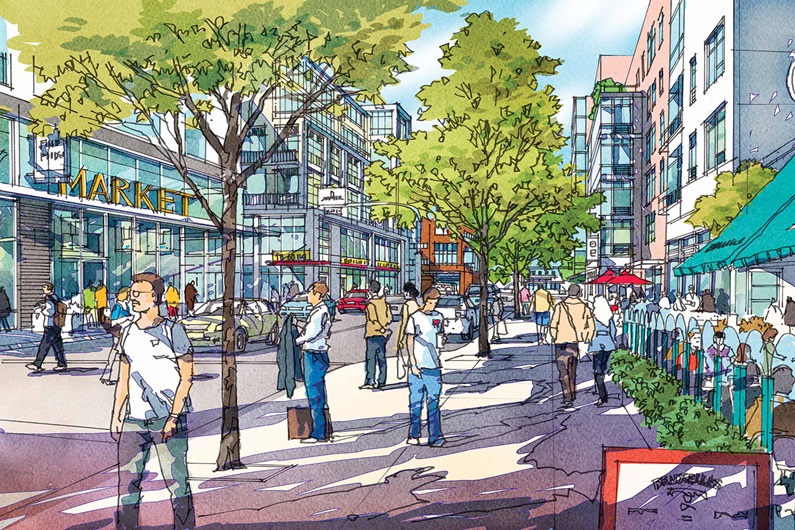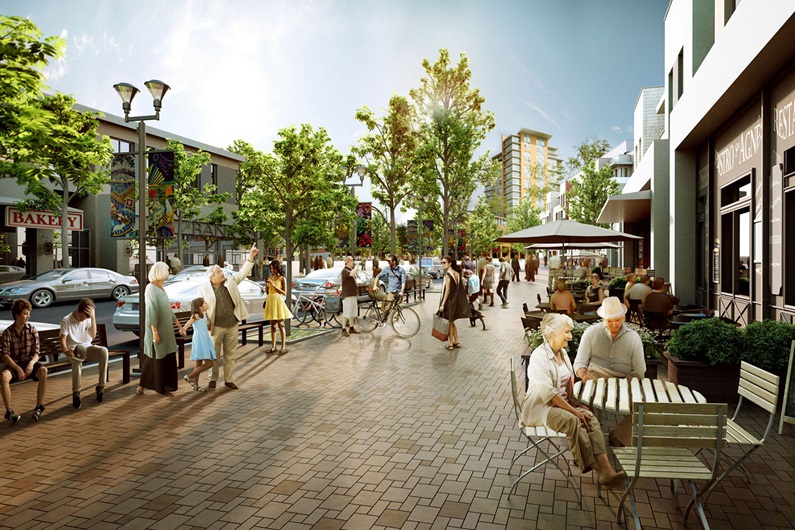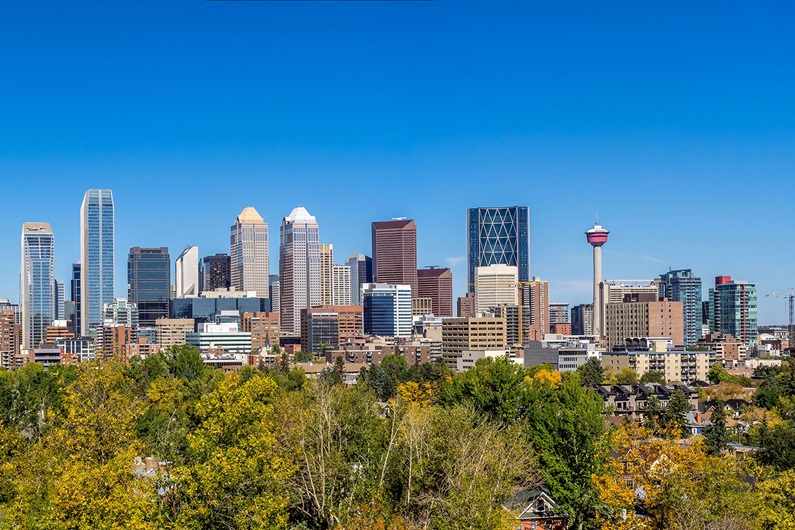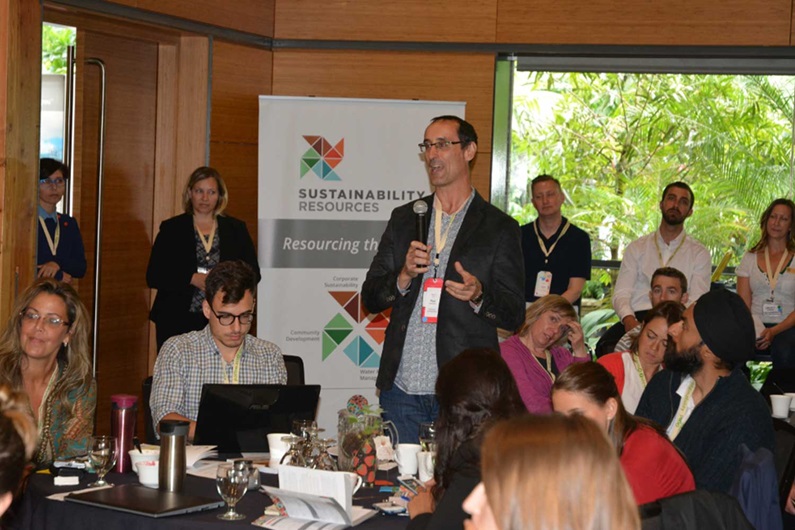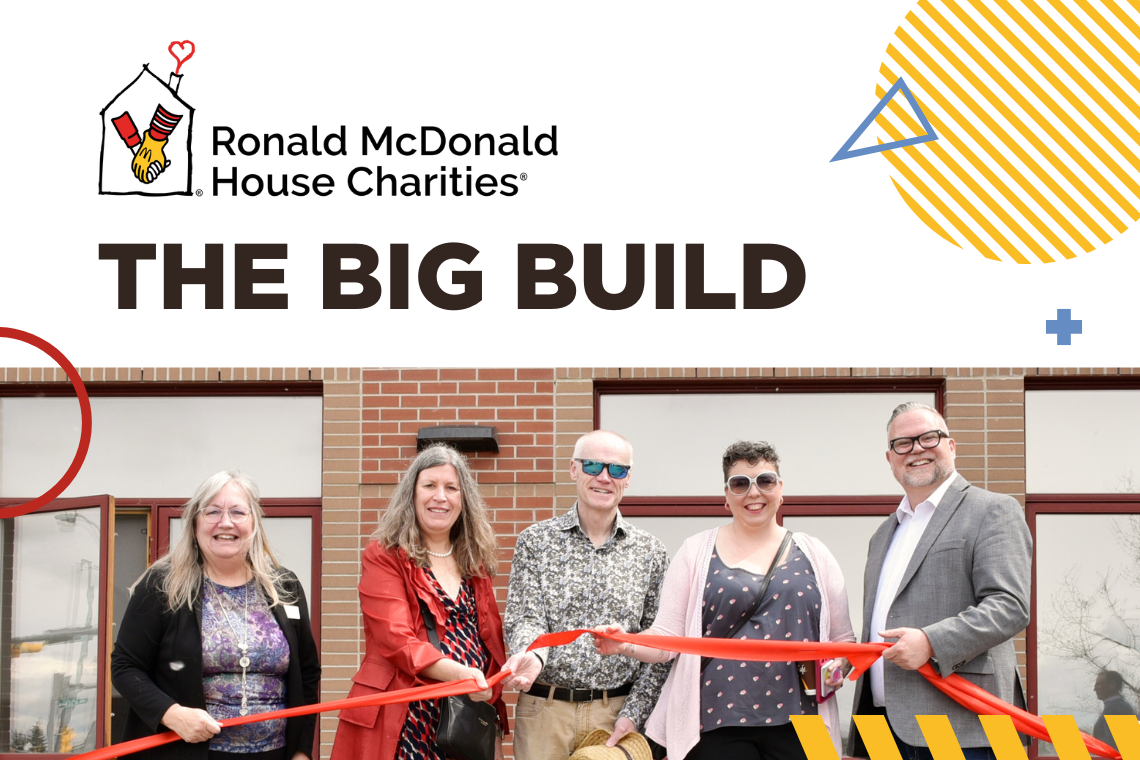
Calgary's trusted source of real estate news, advice and statistics since 1983.
Stories Tagged - Environmental Design
News
Dec. 09, 2020 | Natalie Noble
Stronger together: the surging popularity of cohousing communities across Canada suggests isolation may define our current reality, but it won't define our future
As Calgarians continue to navigate the challenges of an intense economic downturn and a global pandemic – in addition to the standard curveballs life tends to throw one's way – many are re-evaluating their priorities in hopes of a brighter future.
As people tire of self-isolation and its negative health impacts, the idea of cohousing is becoming more attractive than ever. Imagine neighbourly, small-town friendliness meets convenient city living; the privacy and independence of single-family living, but with added space and social amenities available in the form of shared common areas; and a diverse mix of residents, from retirees to young families.
As people tire of self-isolation and its negative health impacts, the idea of cohousing is becoming more attractive than ever. Imagine neighbourly, small-town friendliness meets convenient city living; the privacy and independence of single-family living, but with added space and social amenities available in the form of shared common areas; and a diverse mix of residents, from retirees to young families.
News
May 09, 2018 | Geoff Geddes
Middle-ring mindset
A new look at old neighbourhoods
In addition to the Twist and Woodstock, a lot of great neighbourhoods were created in the 1960s. Today, Calgary's middle-ring suburbs – those developed between 1950 and the early 1970s – face some serious challenges, but, at the same time, some unique opportunities.
"These neighbourhoods are in a good location, fairly close to downtown, and feature large lots with single-family, detached bungalows and split levels," said Francisco Alaniz Uribe, an assistant professor in the faculty of environmental design at the University of Calgary. Uribe co-authored a study on the city's middle-ring communities with his colleague Beverly A. Sandalack, professor and associate dean with the faculty of environmental design.
In addition to the Twist and Woodstock, a lot of great neighbourhoods were created in the 1960s. Today, Calgary's middle-ring suburbs – those developed between 1950 and the early 1970s – face some serious challenges, but, at the same time, some unique opportunities.
"These neighbourhoods are in a good location, fairly close to downtown, and feature large lots with single-family, detached bungalows and split levels," said Francisco Alaniz Uribe, an assistant professor in the faculty of environmental design at the University of Calgary. Uribe co-authored a study on the city's middle-ring communities with his colleague Beverly A. Sandalack, professor and associate dean with the faculty of environmental design.
News
March 07, 2018 | Mario Toneguzzi
Buses, trains and automobiles
Plans for Anderson Station transit-oriented development approach final approval
A new outline plan and land use application for the lands surrounding the Anderson LRT Station was approved at the Calgary Planning Commission in February and will now go before city council on April 16 for final approval.
Doug Cassidy, director of real estate and development services for the City of Calgary, said Anderson Station has many characteristics that make it viable as a transit-oriented development (TOD) site.
A new outline plan and land use application for the lands surrounding the Anderson LRT Station was approved at the Calgary Planning Commission in February and will now go before city council on April 16 for final approval.
Doug Cassidy, director of real estate and development services for the City of Calgary, said Anderson Station has many characteristics that make it viable as a transit-oriented development (TOD) site.
News
Dec. 06, 2017 | Kathleen Renne
Connected communities
Hub living is the name of the game when it comes to new-neighbourhood design in northwest Calgary
When discussing the current trend of building Calgary residential communities around "hubs" (also known as "activity centres" or "nodes"), the phrase "back to the future" seems apt.
"It's about concentrating uses and activities in one area ... It's how settlements and civilizations have been developing forever," said Beverly Sandalack, associate dean and professor of landscape architecture and planning in the University of Calgary's Faculty of Environmental Design.
"It fell out of favour post-World War II with the over-reliance on the car, but, except for this 50-year aberration, main streets have always been the centre of community activity and business."
When discussing the current trend of building Calgary residential communities around "hubs" (also known as "activity centres" or "nodes"), the phrase "back to the future" seems apt.
"It's about concentrating uses and activities in one area ... It's how settlements and civilizations have been developing forever," said Beverly Sandalack, associate dean and professor of landscape architecture and planning in the University of Calgary's Faculty of Environmental Design.
"It fell out of favour post-World War II with the over-reliance on the car, but, except for this 50-year aberration, main streets have always been the centre of community activity and business."
News
Oct. 05, 2017 | Geoff Geddes
Calgary's housing future
Trends shaping the city's short- and long-term development
Absent a crystal ball, the future of housing in Calgary is very much up in the air. At the same time, there are some notable trends that offer clues to what's on the horizon for the curious, the concerned and those who just like to plan ahead.
"I think the findings from the 2016 census highlight changes in the Calgary housing market," said Rylan Graham, a sessional instructor in the Faculty of Environmental Design at the University of Calgary.
"We saw significant growth in many of the inner-city neighborhoods developed pre-World War II, and at the periphery of the city through new greenfield development. These areas are where most of the population growth occurred from 2011-2016."
Absent a crystal ball, the future of housing in Calgary is very much up in the air. At the same time, there are some notable trends that offer clues to what's on the horizon for the curious, the concerned and those who just like to plan ahead.
"I think the findings from the 2016 census highlight changes in the Calgary housing market," said Rylan Graham, a sessional instructor in the Faculty of Environmental Design at the University of Calgary.
"We saw significant growth in many of the inner-city neighborhoods developed pre-World War II, and at the periphery of the city through new greenfield development. These areas are where most of the population growth occurred from 2011-2016."
News
Oct. 05, 2017 | Gerald Vander Pyl
Inward growth
City continues process of intensification, as communities adjust to higher-density living
For a long time, news stories about development in Calgary tended to paint a picture of a city growing out of control, with headlines like "Calgary battles urban sprawl" or "Calgary versus the car: the city that declared war on urban sprawl."
Rylan Graham, an instructor in the University of Calgary's Faculty of Environmental Design, says after the Second World War, much of the population growth in cities occurred on the urban-rural fringe.
"This is the form of growth that is often connected with the term urban sprawl," he said. "Generally, planning has come to recognize the ills of urban sprawl – that it is unsustainable socially, economically and environmentally."
For a long time, news stories about development in Calgary tended to paint a picture of a city growing out of control, with headlines like "Calgary battles urban sprawl" or "Calgary versus the car: the city that declared war on urban sprawl."
Rylan Graham, an instructor in the University of Calgary's Faculty of Environmental Design, says after the Second World War, much of the population growth in cities occurred on the urban-rural fringe.
"This is the form of growth that is often connected with the term urban sprawl," he said. "Generally, planning has come to recognize the ills of urban sprawl – that it is unsustainable socially, economically and environmentally."
News
June 08, 2017 | Kathleen Renne
SHIFT conference promises opportunity to "experience the future of Calgary"
"It is time to SHIFT or get off the pot!" That's the call to action Pathways 2 Sustainability – Alberta's Sustainable Communities Initiative – has issued in advance of its upcoming conference, SHIFT, which takes place June 15-17 at the St. Louis Hotel in Calgary's East Village.
SHIFT promises attendees an opportunity to "Experience the Future of Calgary – the SHIFT to a resilient society and new economy and what it means for our city."
"We have a changing political landscape in Alberta and Canada that's moving to adopt climate resilience in the ways in which we build, design and manage communities and community systems, including food systems, energy systems and transportation systems," said SHIFT co-ordinator and Pathways 2 Sustainability executive director, Lisa Fox.
SHIFT promises attendees an opportunity to "Experience the Future of Calgary – the SHIFT to a resilient society and new economy and what it means for our city."
"We have a changing political landscape in Alberta and Canada that's moving to adopt climate resilience in the ways in which we build, design and manage communities and community systems, including food systems, energy systems and transportation systems," said SHIFT co-ordinator and Pathways 2 Sustainability executive director, Lisa Fox.
